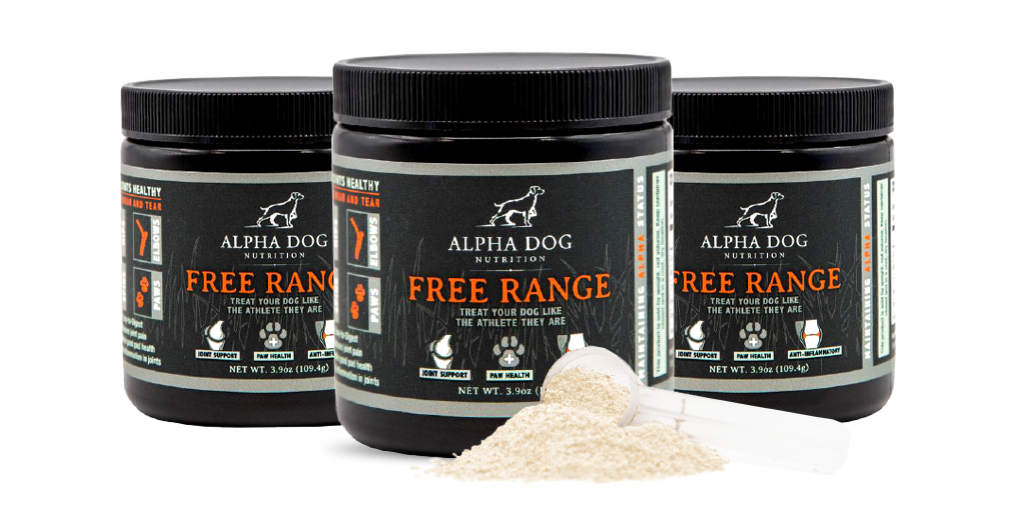Hip dysplasia is a common orthopedic condition in dogs, particularly in larger breeds, where the hip joint does not fit properly into the hip socket.
This malformation can lead to arthritis, pain, and decreased mobility over time.
Understanding the causes of hip dysplasia is essential for effective management and prevention.
In this post, we will explore five ways to ease canine hip dysplasia, starting with the causes of hip dysplasia in dogs.
What Causes Hip Dysplasia in Dogs?
Hip dysplasia is primarily influenced by genetic factors, but several other elements can contribute to its development:
- Genetics: A hereditary predisposition is the most significant risk factor, particularly in large and giant breeds like German Shepherds, Labrador Retrievers, and Golden Retrievers.
- Growth Rate: Rapid growth during puppyhood can increase the risk of hip dysplasia, especially if the dog is overweight.
- Nutrition: An improper diet, particularly one that is too high in calories or imbalanced in nutrients, can affect bone development.
- Exercise: Lack of appropriate exercise during a dog’s growth phase can lead to weakened muscles and joints, contributing to hip dysplasia.
- Weight: Being overweight puts additional stress on joints, exacerbating the condition and leading to further complications.
Recognizing these causes can help pet owners take proactive steps to manage their dogs’ health.
5 Ways to Ease Canine Hip Dysplasia
1. Joint Support Supplement
A high-quality joint support supplement can significantly help manage the symptoms of hip dysplasia.
These supplements often contain glucosamine, chondroitin, and other beneficial ingredients that promote joint health, reduce inflammation, and alleviate pain.
Regular use can help improve mobility and enhance your dog’s quality of life.
Out of all the joint support supplements we’ve tried, my dog’s favorite is Alpha Dog’s Free Range Glucosamine Powder.
Free Range is the ideal supplement for managing canine hip dysplasia due to its potent formulation, which includes glucosamine, chondroitin, and MSM—key ingredients known to support joint health and alleviate discomfort.
This premium joint supplement is crafted with high-quality, time-tested ingredients, ensuring maximum efficacy for dogs of all breeds and sizes.
Additionally, the inclusion of real beef liver powder not only enhances flavor but also provides essential B vitamins that contribute to overall well-being.
With its focus on safety and effectiveness, Alpha Dog’s supplement helps reduce inflammation and pain, allowing your furry friend to enjoy a more active and comfortable life.
Simply follow the directions on the back and you’re good to go!
2. Maintain a Healthy Weight
Excess weight can exacerbate the symptoms of hip dysplasia by putting additional stress on the joints.
Managing your dog’s weight is crucial for reducing pain and improving mobility.
Monitor your dog’s diet and ensure they are receiving appropriate portions based on their size and activity level.
Regular exercise, combined with a balanced diet, can help maintain a healthy weight.
3. Provide Regular, Low-Impact Exercise
Regular, low-impact exercise is essential for keeping your dog’s muscles strong and maintaining joint flexibility without causing further strain.
Engage your dog in activities like walking, swimming, or gentle play that do not put excessive pressure on their hips.
Aim for consistent, moderate exercise rather than high-impact activities, which can worsen hip dysplasia.
4. Use Supportive Equipment
Supportive equipment can help improve your dog’s mobility and reduce discomfort associated with hip dysplasia. Items such as harnesses, ramps, or orthopedic beds can provide added support.
Consider using a harness that distributes weight evenly and allows for easier movement.
Ramps can help your dog access vehicles or elevated areas without straining their hips, and orthopedic beds provide better support for their joints during rest.
5. Regular Veterinary Check-ups
Regular veterinary visits are crucial for managing hip dysplasia effectively.
Your veterinarian can provide guidance on treatment options and monitor your dog’s condition over time.
Schedule routine check-ups to assess your dog’s joint health and discuss any changes in behavior or mobility.
Your veterinarian may recommend physical therapy, medications, or other interventions to help manage symptoms.
Support Your Dog’s Hip Dysplasia
Easing canine hip dysplasia involves a combination of proper nutrition, exercise, weight management, and regular veterinary care.
By incorporating a joint support supplement into your dog’s regimen, maintaining a healthy weight, providing regular low-impact exercise, using supportive equipment, and ensuring routine veterinary check-ups, you can significantly improve your dog’s quality of life.
If you notice signs of hip dysplasia in your dog, such as limping or difficulty standing up, consult your veterinarian for a thorough evaluation and tailored treatment plan.
With the right approach, you can help your furry friend lead a more comfortable and active life.
Thank you for reading!

